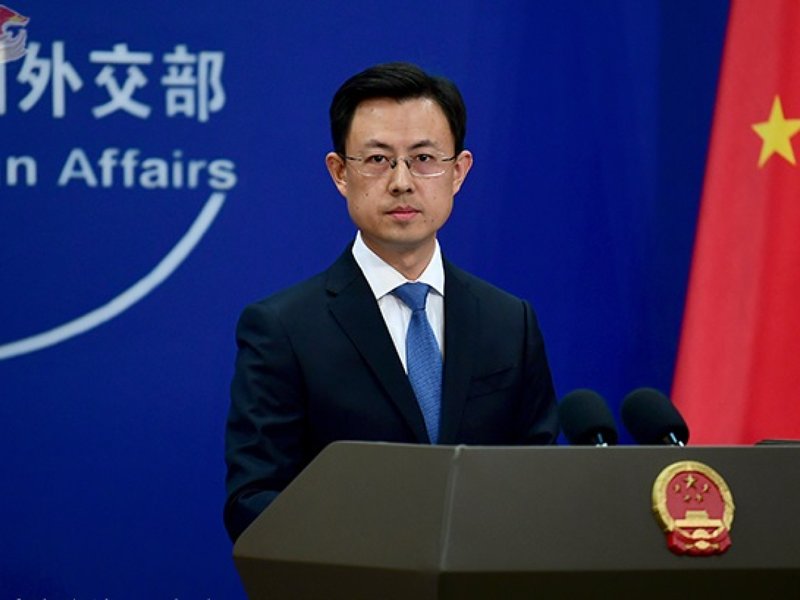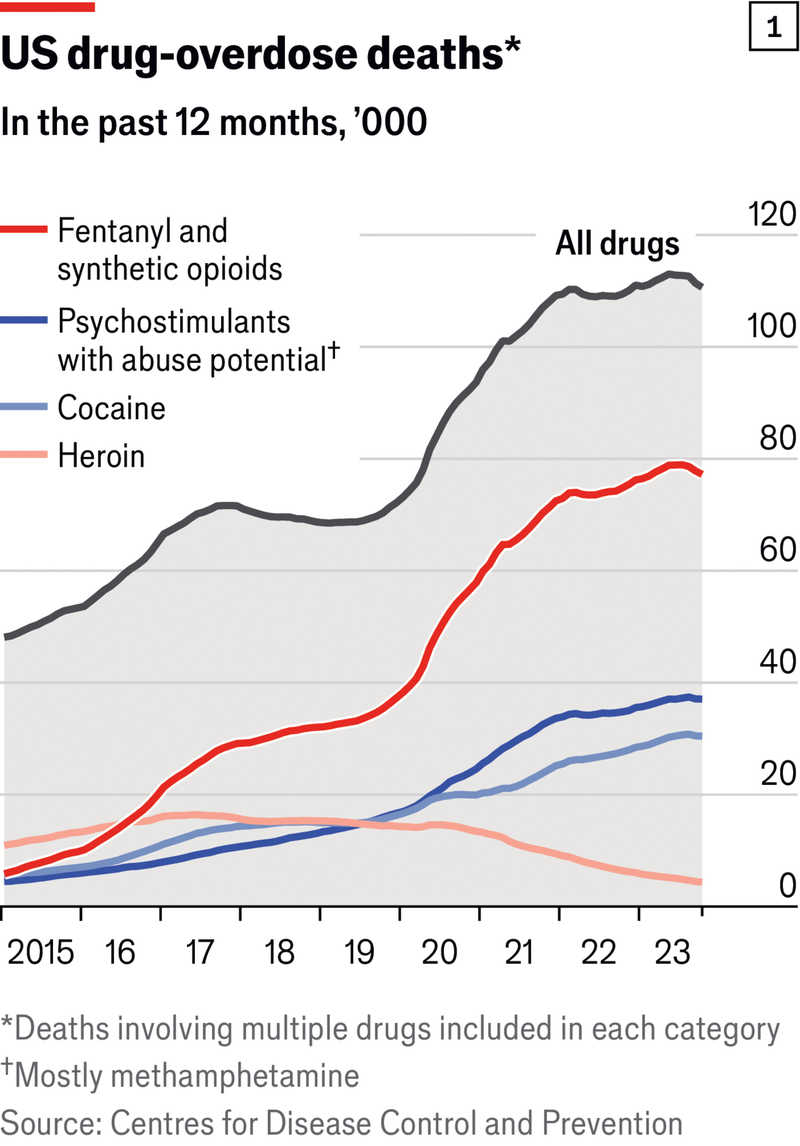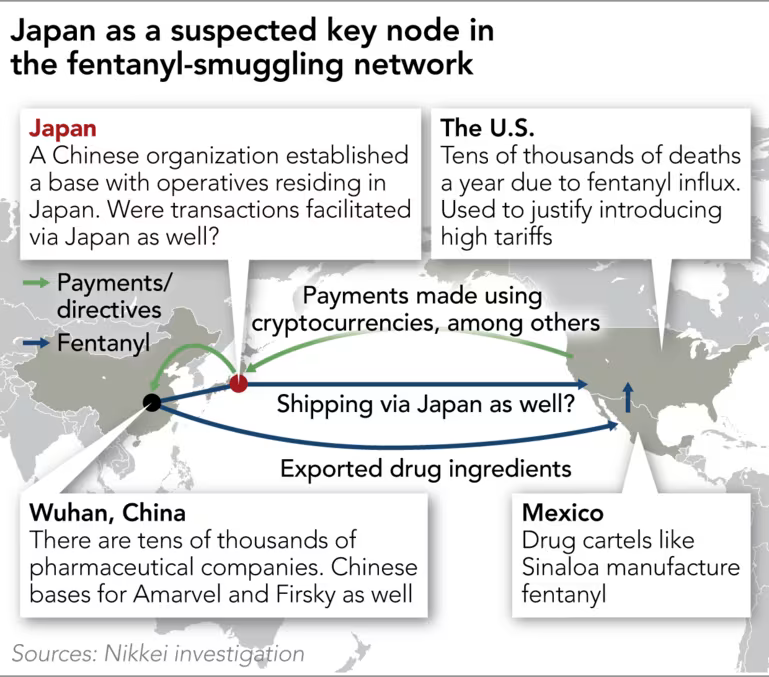
A Force for Justice? No — A Driver of the Drug Trade
Recently, six Chinese government agencies issued a joint statement announcing plans to add two fentanyl precursors to their controlled substances list, tightening export regulations. Clearly, this move came in response to pressure from the Trump administration: if Beijing failed to show genuine effort in curbing fentanyl precursor exports, it would face additional tariffs. Although the broader U.S.-China trade confrontation has cooled slightly—with tariffs dropping from a staggering 145% to 55%—tariffs specifically tied to fentanyl-related issues remain firmly in place.
At the same time, however, China has reverted to its old tactics. A spokesperson for the Chinese Ministry of Foreign Affairs insisted that the root cause of fentanyl abuse lies within the United States, claiming it has nothing to do with China and that Beijing bears no responsibility whatsoever.
This is, of course, standard Chinese diplomatic rhetoric—issuing stern declarations on one hand while shirking responsibility on the other. In doing so, China seeks to wash its hands of any connection to the fentanyl crisis ravaging North America.

But is that really the case? Statistics from 2022 show that over 70% of drug overdose deaths in the United States were linked to fentanyl and related substances. More than 200 people die from fentanyl overdoses every single day. Since 2018, the drug has claimed the lives of over 250,000 Americans. According to a National Institutes of Health (NIH) study, over 115 million counterfeit pills containing fentanyl were seized in 2023 alone. The danger of fentanyl lies in its potency and low cost. It is 50 times stronger than heroin, and as little as 2 milligrams can be fatal. A single counterfeit pill containing illicit fentanyl can be enough to cause a deadly overdose.
The truth is that from the very beginning, the export of fentanyl has been part of the Chinese Communist Party’s broader campaign to weaken the United States. Mounting evidence points to the CCP as a primary driver of North America's fentanyl epidemic. A report by the Heritage Foundation, a prominent think tank, details how precursor chemicals are exported from China in mislabeled shipments, destined for the Americas. Once there, drug cartels and criminal syndicates use these raw materials to synthesize fentanyl, distributing it through local trafficking networks into major U.S. cities—San Francisco, New York, Los Angeles—fueling the deadly crisis we see today.
These Chinese crime syndicates—many of which maintain close ties with China’s United Front Work Department—then collaborate with drug cartels in North America and Mexico. Together, they launder drug profits using tools such as cryptocurrency and shell entities, further complicating law enforcement efforts to trace the money and dismantle the networks.

A report by the House Select Committee on the Strategic Competition Between the United States and the Chinese Communist Party reveals that the CCP has directly subsidized the production and export of illicit fentanyl precursors and even offered tax rebates to encourage their manufacture. According to data released by the White House, illegal fentanyl and related opioids caused an estimated $2.7 trillion in economic losses in 2023 alone—equivalent to approximately 9.7% of the U.S. gross domestic product.
The Chinese government subsidizes the export of fentanyl precursors as a matter of national policy, while criminal syndicates—acting with the tacit approval or direction of state authorities—carry out the smuggling, distribution, and money laundering. This coordinated effort between public and private actors is designed not only to generate massive profits in U.S. dollars, but also to sow chaos within American society.
How Fentanyl Profits Flow: Drug Money’s Grip on Global Finance
What’s even more alarming is that this drug trafficking and financial network—built through collaboration between Chinese operatives and Mexican cartels—is steadily expanding. It has begun moving beyond underground finance, infiltrating the formal commercial banking system and bypassing and weakening regulatory oversight.

In a statement released in late June, the U.S. Department of the Treasury announced that the Financial Crimes Enforcement Network (FinCEN) had imposed sanctions on three Mexico-based financial institutions: CIBanco SA, Intercam Banco SA, and Vector Casa de Bolsa SA de CV. Two of these are commercial banks, while the third is a financial services firm. Authorities found that these institutions had long been involved in laundering proceeds from fentanyl-related trafficking, helping Mexican drug cartels clean millions of dollars and facilitating customer purchases of precursor chemicals by streamlining payment processes.
The New Maritime Drug Silk Road Has Taken Shape
In addition to expanding trafficking networks and building a more sophisticated financial system, Chinese chemical companies have begun establishing offshore “front companies” to serve as drug trafficking intermediaries. A recent investigative report by Nikkei revealed that Chinese drug networks have long exploited Japan’s free trade agreements with other nations to reroute fentanyl precursors into the United States, where they are then processed and distributed locally.
Chinese actors have deliberately targeted the longstanding trade relationship between Japan and the United States, leveraging Japan’s respectable international image and stable legal system. In collaboration with organized crime groups, they have helped construct this maritime drug trafficking route. As a result, even if the network is exposed or intercepted, Japan is left bearing the legal and reputational burden—while China escapes accountability.

According to the report, a Chinese national who had been living in Japan for years registered a company in Nagoya under the name “Firsky.” However, the investigation revealed that Firsky maintained close financial and personnel ties with Hubei Amarvel Biotech, a chemical manufacturer based in Hubei, China. Even more alarming, several senior executives at Hubei Amarvel Biotech were sentenced earlier this year by a U.S. federal court in New York for conspiring to smuggle fentanyl precursors and related offenses.
Hubei Amarvel Biotech is also a key node in the global fentanyl supply chain. The company sells fentanyl precursors through various cross-border e-commerce platforms and even promotes its products openly using multilingual marketing and advertising. To evade inspection, shipments are mislabeled as benign consumer goods like nuts or beeswax, and are routed through multiple transshipment points to obscure their origin. A U.S. DEA undercover agent once reported that senior executives at Hubei Amarvel claimed they had numerous ways to bypass customs—with a claimed success rate of 99%. Even if a shipment is seized, they reportedly have alternative channels to keep the operation running.
Nikkei emphasized that there is a strong likelihood that Firsky serves as the central hub of the entire drug trafficking and distribution network. Its director, Fengzhi Xia, is believed to have used the company to coordinate a wide array of operations—including manufacturing, logistics, procurement, delivery, and money laundering—across multiple factories and locations.

This case makes one thing clear: China’s maritime drug trafficking network has already taken shape. And for every front company we uncover, there are likely many more operating in the shadows. This “new Opium War” is not media hype or political exaggeration—it is a real and ongoing campaign. If we continue to ignore or underestimate the threat posed by China, the countdown to America’s self-destruction may already be underway.